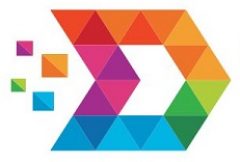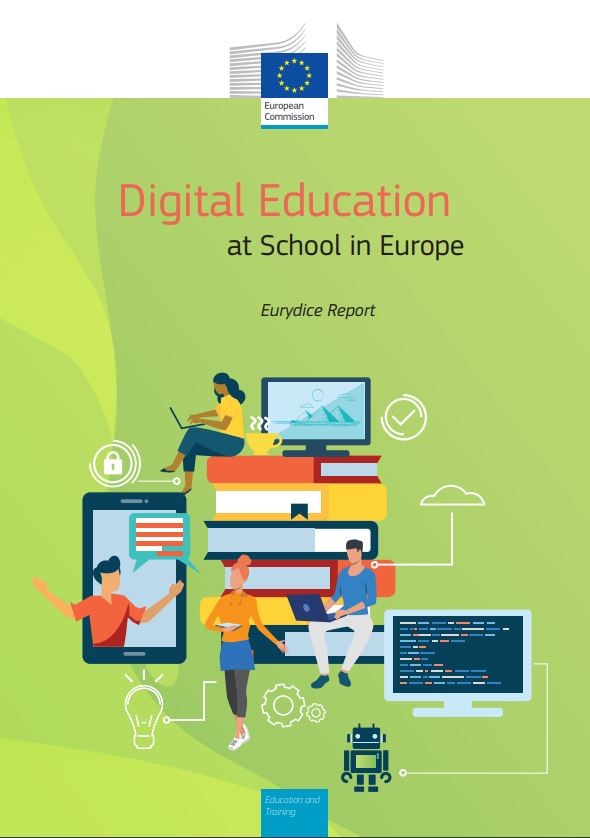From European Commission/EACEA/Eurydice, 2019. Digital Education at School in Europe. Eurydice Report. Luxembourg: Publications Office of the European Union.
Download:
Please download the full report – it is important for all education-levels in Europe. Here some ideas from the first chapter:
This report addresses digital education in Europe at primary and general (lower and upper) secondary levels for the school year 2018/19 in all 28 EU Member States, as well as Albania, Bosnia and Herzegovina, Switzerland, Iceland, Liechtenstein, Montenegro, North Macedonia, Norway, Serbia, and Turkey, covering 43 education systems in total.
Digital competence in school curricula
- There is a consistent approach to defining digital competence as a key competence across Europe. Nearly half of the European education systems refer to the European key competence definitions for digital competence: 11 education systems use exclusively their own national definition of digital competence (1); eight other countries (Estonia, France, Cyprus, Lithuania, Malta, Austria, Albania and Serbia) use both the European definition and a national one (see Figure 1.1). In general, these definitions originate in curriculum or top-level strategy documents related to digital competence.
- The development of digital competence is included in the vast majority of countries at all three education levels. However, unlike other traditional school subjects, it is not only addressed as a topic in its own right, but also as a transversal key competence. In primary education, in eight education systems (French and German-speaking Communities of Belgium, Croatia, Latvia, Luxembourg, Albania, Bosnia and Herzegovina, and Turkey), digital competence is not explicitly addressed in the national curriculum in the reference year (2018/19), while in secondary education, this is only the case in two systems – the French and German-speaking Communities of Belgium. However, the French Community of Belgium, Croatia and Latvia are currently reforming the curriculum to introduce digital competences or are in the process of implementing ongoing curriculum changes as from primary education (see Figure 1.2).
- In primary education, more than half of the European education systems include digital competence as a cross-curricular theme. It is addressed as a compulsory separate subject in 11 countries (2) and integrated into other compulsory subjects in ten countries (3). A quarter of the education systems combine two approaches (4), while in Czechia and Liechtenstein all three exist at the same time.
- In lower secondary education the number of countries teaching digital competences as a compulsory separate subject increase to over half of the education systems. In upper secondary, the number of countries teaching digital competences as a cross-curricular topic decreases slightly in relation to lower secondary and fewer countries offer compulsory separate subjects for all students in this area. It must be borne in mind though that in upper secondary education, students can usually choose more optional subjects, and these can include subjects related to digital competence.
- Iceland, Greece and North Macedonia have the highest number of recommended hours for information and communication technologies (ICT) as a compulsory separate subject in primary education (around 150 hours). Lithuania and Cyprus allocate the highest number of hours during lower secondary education, although they do not have any recommended instruction time for primary education. Within the scope of compulsory education, Romania has the highest number of hours related to digital competence as a compulsory separate subject in upper secondary education (see Figure 1.3).
- Half of the European education systems are currently reforming the curriculum related to digital competence (see Figure 1.4). The revisions aim either at introducing digital competence into the curriculum where it had not previously been addressed or making the subject area more prominent. Some reforms are also about changing the curriculum approach, updating content or strengthening particular areas such as coding, computational thinking or safety.


